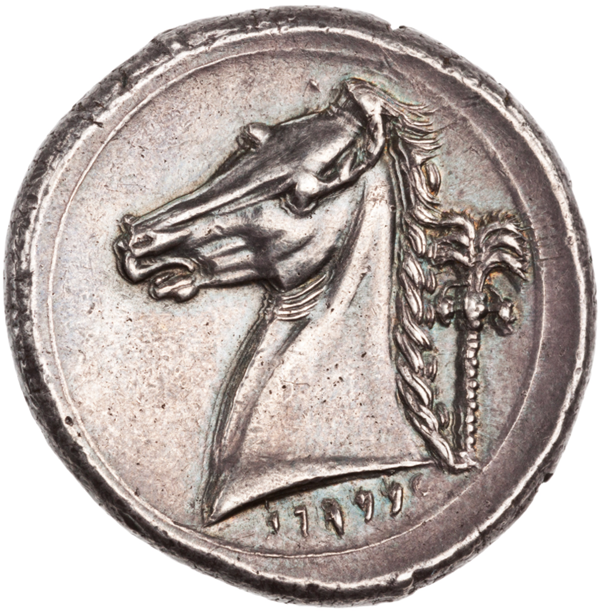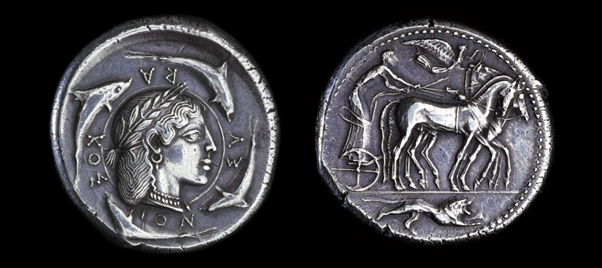
Ancient Coin of the Day: As today is quite the Neronian anniversary, let’s take a look at an interesting series of coins he issued, the Decursio sestertii of AD 62-68. #ACOTD #Nero #Decursio
Image: RIC Nero 170; Münzkabinett Berlin (18220881). Link - numismatics.org/ocre/id/ric.1(…

Image: RIC Nero 170; Münzkabinett Berlin (18220881). Link - numismatics.org/ocre/id/ric.1(…


These coins form a novel and innovative series in the final years of Nero's reign and have provoked much discussion through their martial imagery, not least because they are very much at odds with the typical Neronian depictions.
Nero is not famed for his military coinage, being for more keen to advertise peace, such as on this aureus of AD 64-65 with a Reverse featuring the Temple of Janus.
Image: RIC Nero 50; British Museum (R.6525). Link - numismatics.org/ocre/id/ric.1(…
Image: RIC Nero 50; British Museum (R.6525). Link - numismatics.org/ocre/id/ric.1(…

The Obverse of the coin shows a laureate portrait of Nero, interestingly with what is thought to be an aegis at his neck, with a Legend of NERO CLAVDIVS CAESAR AVG GER P M TR P IMP P P – ‘Nero Claudius Caesar Augustus Germanicus, Pontifex Maximus... 

'...with Tribunician Power, Victorious Commander, Father of the Fatherland’. The aegis in particular marks this out as a martial representation.
The Reverse shows a cuirassed Nero mounted on a horse with his cloak flying behind him, accompanied by a mounted soldier carrying a vexillum, the Legend ‘DECVRSIO’ – ‘Military Exhibition’ - appearing in exergue. 

While it may be possible to connect the series with the construction of the Trimphal Arch for Corbulo's victories over the Parthians, this is perhaps not as convincing as other interpretations.
Image: RIC Nero 147; Münzkabinett Berlin (18226550). Link - numismatics.org/ocre/id/ric.1(…

Image: RIC Nero 147; Münzkabinett Berlin (18226550). Link - numismatics.org/ocre/id/ric.1(…


The representation on these coins may in fact be a form of theatrical performance, which perhaps better fits with the typical Neronian attitudes to both military endeavour and public spectacle.
Image: RIC Nero 105; Münzkabinett Berlin (18220895). Link - numismatics.org/ocre/id/ric.1(…

Image: RIC Nero 105; Münzkabinett Berlin (18220895). Link - numismatics.org/ocre/id/ric.1(…


One particular inspiration for such a performance could be the ‘lusus Troiae’ informed by the passage of Virgil’s ‘Aeneid’ (V.545-605) where a mock battle was performed as part of the anniversary games for the death of Anchises.
For more on this interpretation, see:
SMITH, DEREK R. “The DECVRSIO Sestertius Types of Nero and the Lusus Troiae.” The Numismatic Chronicle (1966-), vol. 160, 2000, pp. 282–289.
jstor.org/stable/42668274
#ACOTD #Nero #Decursio
SMITH, DEREK R. “The DECVRSIO Sestertius Types of Nero and the Lusus Troiae.” The Numismatic Chronicle (1966-), vol. 160, 2000, pp. 282–289.
jstor.org/stable/42668274
#ACOTD #Nero #Decursio
• • •
Missing some Tweet in this thread? You can try to
force a refresh















